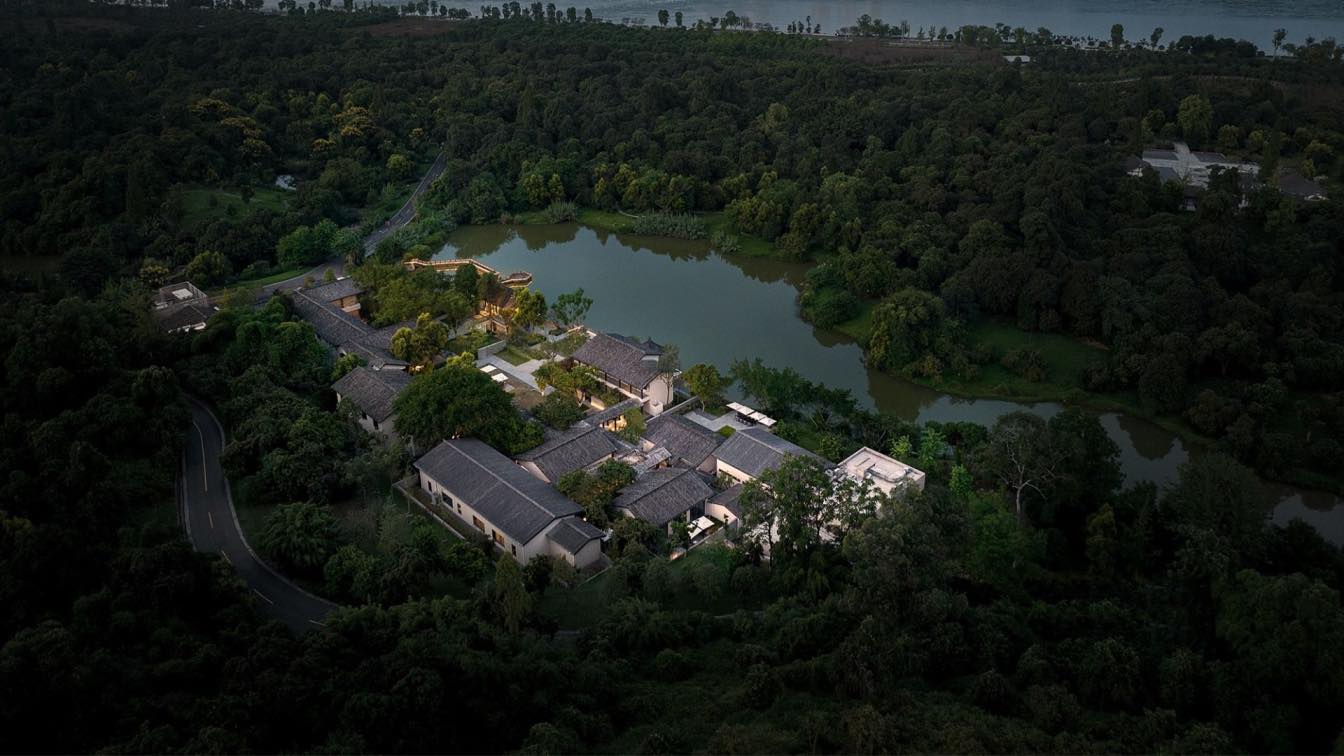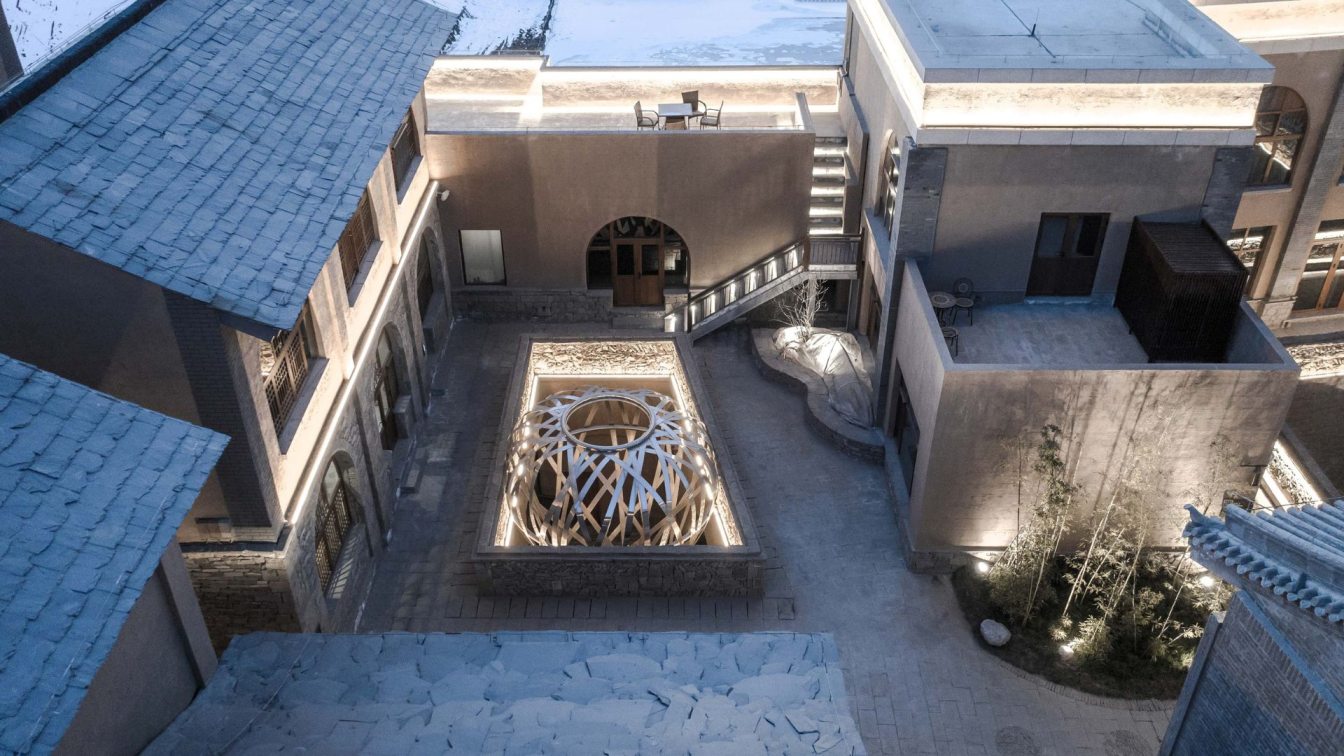An Idyllic Existence in the Appropriate Proximity to the Nature and a Clustered Human Settlement of a Quiet Village.
Design Adds Another Dimension to the Nature of History
In 2013, Chinese National Geographic hailed Songyang, a county to the southeast of the province of Zhejiang as “the last hidden gem south of the Yangtze River”. Here, more than a hundred ancient villages hide on the far side of mountain roads and undulating cliffs. Perhaps due to the difficult access to the region, it remains close to nature and far away from the bustle of the city.
 Image © Wang Ting
Image © Wang Ting
However, once visitors arrive on-site, time and space are experienced differently; aged trees, ancient temples, old houses, all provide the most unique cultural atmosphere, authenticity sealed away from public view, worthy of being praised as “an example of the ancient Chinese county”.
 Image © Wang Ting
Image © Wang Ting
In the past seven years, this landscape of nature and culture has welcomed new life in the form of fresh design interpretations, gradually becoming a utopia for designers. Through a precise approach reminiscent of the most skilled acupuncture techniques, Songyang comprises a charming collection of diverse elements ranging from mountain scenery to primitive ancient villages and modern architectural masterpieces.
 Image © Wang Ting
Image © Wang Ting
Three years ago, JIAKUN ARCHITECTS, led by principle architect Liu Jiakun, started the overall design of Songyang Wenli Community Center, including architecture, interior and landscape. In the design phase of Shanthi Boutique hotel at the center of Songyang City, Jiakun invited Zhang Can, who is the principal designer of CSD DESIGN, to join the team and deepen the interior design of the Shanthi.
 Image © Wang Ting
Image © Wang Ting
After strolling along Qingyun road, across the Confucian Temple, and through the courtyard on the south side of the old district’s committee building, visitors arrive at the “Small Hall” of the Shanthi Boutique Hotel. A multitude of unrestrained scenes from life, history and nature manifests here, masterfully curated inside its courtyard.
 Image © Wang Ting
Image © Wang Ting
To Live in History or to Live in Nature
The hotel mainly consists of two elements: the original old district’s committee structures as well as brand-new spaces. Both the old and the new follow the same logic on architecture and design: to respect and procure the integration of all objects on site, including buildings and trees. When encountering trees, either approach must respect them and let them be in courtyards.
 Image © Wang Ting
Image © Wang Ting
When encountering old buildings, it’s necessary to appreciate them like good observers, in a considerate manner, and allow them to naturally grow into graceful residences with central patios where “water from four directions flows into the hall”, in the architectural style of ancient residences south of the Yangtze River.
 Image © Wang Ting
Image © Wang Ting
In the same fashion, the reception has been designed around an old tree. Terrazzo-like materials indoors and outdoors blur the boundaries of space, while vivid palm-weaving works from local artisans act as another key element of the design.
 Image © Wang Ting
Image © Wang Ting
The designer deliberately integrates nature, culture and life into a well-balanced concept where all spaces and objects are in harmony with the course of “everything under the heavens”, allowing interaction between rigid and soft elements, leading feelings, thoughts and emotions to converge.
 Image © Wang Ting
Image © Wang Ting
The Intersection where People and Architecture Meet with the Old and the New
At the “border area” between the newly built guest rooms and the district’s committee, a living room conceived as a cozy “fireside lodge” becomes the intersection that connects the old with the new.
The design further extends Songyang’s “cloaked” strategy, by installing mesh screens that separate the access lines to the guest rooms and provide a poetic atmosphere proper of “late night talks by the fireplace”.
 Image © Wang Ting
Image © Wang Ting
The intertwined mechanism of people and time becomes a vivid and unique “decoration”. It also makes everything in the new building worthy of the “stature” of the old building.
The original wood doors witness and record the change of times, while cascades of wooden trusses add up to the style of the construction.
Furthermore, the designer uses tall dark brown wood baseboards and low-hanging corduroy curtains in dark-green tones to add the finishing touch to a dreamy atmosphere of ancient China.
 Image © Wang Ting
Image © Wang Ting
However, the designer doesn’t feel “nostalgic” at all. The historical section has been reorganized in a modern context. Artistic elements such as a caramel leather sofa or vertical patterned glass are more than enough to bring visitors’ thoughts back into the present.
The interior design adopts different strategies in a targeted manner according to the conditions of the building. In the new structure, space and objects are all concise and simple. Artistically painted cement walls and wooden walls provide the best atmosphere to reflect light and shadows.
There is also a reflection screen and shading system hidden on top of the curtain walling in order to keep the space pure.
 Image © Wang Ting
Image © Wang Ting
Artistic palm-weaving patterns reappear complemented by a vast selection of designer furniture in different styles that perfectly describe the nature of time and space in the hotel. Such elements are indoor “centerpieces”, a testimony of memory to be cherished and brought back home.
 Image © Wang Ting
Image © Wang Ting
 Image © Wang Ting
Image © Wang Ting
 Image © Wang Ting
Image © Wang Ting
 Image © Wang Ting
Image © Wang Ting
 Image © Wang Ting
Image © Wang Ting
 Image © Wang Ting
Image © Wang Ting
 Image © Wang Ting
Image © Wang Ting
 Image © Wang Ting
Image © Wang Ting
 Image © Wang Ting
Image © Wang Ting
 Image © Wang Ting
Image © Wang Ting
 Image © Wang Ting
Image © Wang Ting
 Image © Wang Ting
Image © Wang Ting
 Image © Wang Ting
Image © Wang Ting
 Image © Wang Ting
Image © Wang Ting
 Image © Wang Ting
Image © Wang Ting
 Image © Wang Ting
Image © Wang Ting
 Image © Wang Ting
Image © Wang Ting
 Image © Wang Ting
Image © Wang Ting
 Image © Wang Ting
Image © Wang Ting
 Image © Wang Ting
Image © Wang Ting
 Image © Wang Ting
Image © Wang Ting
 Image © Wang Ting
Image © Wang Ting
 Image © Wang Ting
Image © Wang Ting
 Plan
Plan
Connect with the Jiakun Architects





